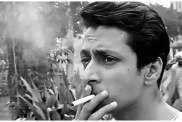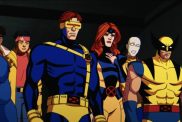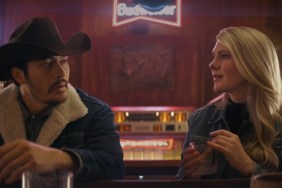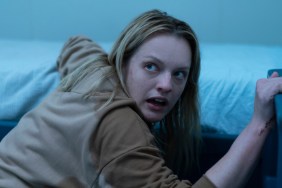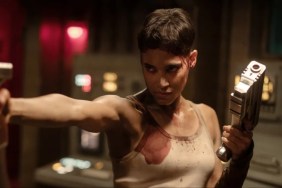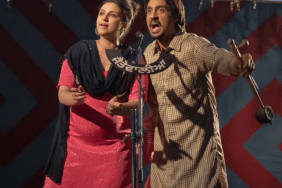
I was recently asked if Criterion’s Blu-ray release of Che was worth a blind buy. It’s a tough question because for some the film itself is worthy, but if you ask me it’s not all that great. I gave it a C+ when I reviewed it back in December 2008, noting the first part as the better of the two films and my opinion on that front hasn’t changed since then. Steven Soderbergh’s four-and-a-half-hour two-part biopic on the Argentine Marxist revolutionary Ernesto “Che” Guevara is a slightly above average film, but Criterion has done its absolute best to make sure the home video release delivers where the film doesn’t and is worthy of your time and money.
I say this because the special features and included commentary by John Lee Anderson, chief consultant on Che and author of the well known biography “Che Guevara: A Revolutionary Life”, not only further enlightens the viewer in reference to the film’s subject matter, but additional features are fascinating conversation starters when discussing the world of cinema and its future. The topics discussed and the quotes themselves will stir up conversation in an film lover’s circle and have already done so here at RopeofSilicon and this is precisely the reason this review is not going to be the standard by-the-book account of what’s included and talking about how great the high-definition picture looks. There’s more to actually discuss here.
First off, last week I watched the first feature on the disc, a making-of featurette aptly titled “Making Che” in which Soderbergh said several things including a quote that ended saying “movies, I think, have become so disposable.” This prompted me to write this editorial as well as Soderbergh’s comments spurred on conversation and it’s just the start when it comes to this disc and not all of it paints a perfect picture of the outspoken director.
Let me continue by giving you a quick introduction to this two-part film using an excerpt from my review:
For all the love-hate there seems to be for Che Guevara none of the reasoning is visible in Soderbergh’s picture as Part One involves the 26th of July Movement in which Che participated alongside Fidel Castro in 1959 to overthrow of the Fulgencio Batista government in Cuba and Part Two featuring Che’s failed attempt to do much of the same in Bolivia in 1966-67. For such a grand effort, as the two films together total 269 minutes of screen time, I would expect more than a slice of life story as neither film gets to the bottom of who Che was and what made him a hero to some and a butcher to others.
There is a MASSIVE gap in Soderbergh’s film and it has to do with what makes Ernesto Guevara – Che. Soderbergh’s film, instead of being simply called Che, should have been called Che: The Story of Two Campaigns. As for why they didn’t film the portion of Che’s life in Havana, before his time in Bolivia, producer Laura Bickford says the following in the “Making Che” doc:
One of the things that we did not go into was what happens when they come into Havana and the years just after winning, in Havana. In that time in Havana a lot of things obviously happened, you could make ten movies about that period when they just won the revolution, but Steven likes to say — in his mind — it was the years behind a desk. […]
We didn’t do the executions because we didn’t do lots of things, but we did feel it was important to show Che’s ruthlessness in terms of pursuing his values and his goals.
I bring this up because at the very start of Part Two, John Lee Anderson says the following in his commentary, referencing nothing but information not covered in either parts of the film:
The years where Che Guevara was in Cuba, after the war and before Bolivia, were not just Che sitting behind a desk. Those are precisely the years in which Che is Che. He is the Che whom Simone De Bouveau and Jean Paul Sartre come to see and sit at his feet in Havana. He is the Che who signs Cuba’s new bank notes with a flourish and a dismissive Che. Without even a surname, but with a slang nickname. He is the man who begins setting up a hemispheric network for guerilla warfare. Che is the grand vizier of revolution in the western hemisphere.
When your chief consultant uses the same exact words Soderbergh used, but uses them to combat his opinion of Che’s Havana years something is definitely missing. Co-screenwriter Peter Buchman fuels this saying, “The biggest criticism we got, in terms of leaving things out was in not filming Havana and what happens in Havana, with Che when he’s overseeing the executions of about three-to-five hundred people, Cubans that were executed at the time.” Uh, yeah, that might be important information considering we are privy to one execution under the watch of Che Guevara in Soderbergh’s film, which doesn’t get to the core of “Che’s ruthlessness” as Bickford referred to it. Shame.
Beyond the film, Criterion’s special features also include a fascinating documentary on the use of the RED One Digital Cinema camera to shoot Che. It was the first time this new digital camera had been used for a feature film and this feature details the issues encountered through all stages of production and the benefits the smaller, digital camera offered. It also affords Soderbergh the chance to talk a little more about the current state of cinema, this time addressing the editing of films now saying, “I feel like we have movies that have more edits in them than they ever have before and they’re longer than they’ve ever been before, and that’s strange to me.”
What’s strange to me, is that he says this inside a special feature documentary for a four-and-a-half-hour film of which its chief consultant blatantly points out “the years in which Che is Che” are completely left out. I’m sure some of the directors Soderbergh is anonymously criticizing here could use these facts as ammo against his films as well. To Soderbergh’s defnese, though, he does say there were times he wishes he had made Che into a ten-hour mini-series, which would have been more appropriate. But then again perhaps earlier ideas of just telling the Bolivia story (Part 2) with Terrence Malick directing would have been just as engaging as the whole of Soderbergh’s film. Instead Malick went on to make The New World and now we have the fascinating yet flawed Criterion release that is Soderbergh’s Che.
Getting back to the “is this a blind buy?” question; if anything I’ve said interests you beyond measure then by all means rush out and buy this release right now. Not only do you get everything I have discussed, but this Blu-ray release also looks and sounds excellent. What you are basically getting are direct copies of the digital theatrical print, compressed as little as possible for high-definition. As a result you get a brilliant picture and what amounts to an excellent commercial for the RED camera.
The features, as I have already detailed a couple at length, also include several deleted scenes with optional commentary from Soderbergh, a fascinating 1967 doc called “End of a Revolution”, additional interviews with historians and the film’s trailer. Also included is a 24-page booklet containing an essay from Amy Taubin and a small replica poster of the Criterion cover art.
My recommendation is to give this film a rental if you haven’t seen it yet and see what you think. If you like what you see then this is a no-brainer must buy, the supplementary material simply adds to the viewing experience giving further detail on Che and the film itself. However, if the film isn’t for you, you must ask yourself how much further you want to explore the subject matter. Criterion has certainly brought everything to the table to make this release worthwhile, now it’s just a matter of whether or not it’s worth your while.


